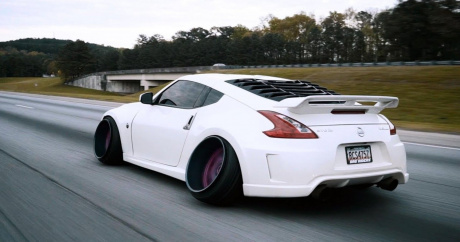
Some cars can have wheels leaning towards an outward or inward angle. This can look awkward and even give the impression that something is wrong with the car’s wheels. However, diagonally-positioned wheels are deliberately set in a way to enhance performance in specific situations.
To understand their benefits and why some prefer it that way, it is essential to differentiate between the two types of positioning.
What is a car camber?
A car camber is simply the angle that your wheels angle relative to the vertical axis. A regular car camber will be neutral, which means 100 percent straight.
Negative car camber
A negative car camber is when the wheels are angled outward at both sides and away from the vertical axis. Their primary purpose is to enhance cornering and turning speed and capabilities.
With a neutral camber, your car’s contact patch (the tire area in contact with the road) is fully central. When a vehicle turns through a corner, the contact patch changes and has to turn to a side. This leads to lower contact with the road during turning, which causes lower grip, traction, and steering ability.
A negative camber (outwardly slanted wheels) helps the car maintain maximum contact with the road when cornering, so it maintains enough traction and speed.
Benefits to having a negative car camber
Besides the enhanced grip on the road surface, negative camber has multiple benefits.
-
Improved Handling
The wheels become perpendicular to the road surface leading to a well-aligned position with negative camber. This means it does not have to go through that extra turning and exertion to take a turn than a neutral camber. With this, a car takes a turn significantly more quickly and without compromising stability on the road.
-
Lower wear and tear
Every tire goes through wear and tear when it has to move across the road surface with significant friction to rotate in a different direction. A negative camber ensures that the contact patch surface is already at the perfect angle, so it doesn’t bear as much damage over time.
-
Smoother braking
Safe cornering on a neutral camber involves a lot of brakes to maintain control and stability. Negative camber already provides enough traction and contact with the ground, so you don’t have to brake as much.
Positive camber
Positive cambers are more typical of heavy-duty cars or big trucks with no steering capabilities. This is when a car’s wheels are turned inward towards the vertical axis and helps with maintaining steering responsiveness. This helps keep a driver in control of their steering direction as they move through a straight route.
Benefits of having a positive camber
-
Lighter steering
When driving a giant truck or car, the steering capabilities can be lowered as you need higher steering power to make simple moves. With positive camber, your wheels always pull inwards, making steering more manageable and stable.
-
Enhanced stability
This benefit is more pronounced for only bigger trucks and cars as they are not as close to the center of gravity. Keeping a straight direction can be more challenging with a neutral camber when driving on an uneven surface. Positive cambers ensure a more balanced pressure in the center, allowing better stability on the ground.
Conclusion
Both negative and positive camber is only beneficial when dealing with specific situations like excessive cornering, racing, or enhanced stability for bigger trucks. Using slanted tires in either direction can cause more wear and tear and even the risk of a puncture when used for a regular commute.
Same articles

Bridgestone Potenza Re980as vs Michelin Pilot Sport A/S 3 (W- or Y-Speed Rated): What is better to choose?
GuidesIt's time to replace the all-season tires on your car, and you're trying to decide between

2020 Honda Ridgeline: Is it worth it?
GuidesThe 2020 Honda Ridgeline carves out its own niche among pickup trucks. It's not as burly as a full-size truck, but it has more towing and hauling capability than most crossover SUVs. This...

What are car speakers for and should they be installed?
GuidesCar speakers serve two main purposes. The first is to provide high-quality sound reproduction of music, and the second is to act as a safety measure by amplifying sounds from outside the vehicle...
